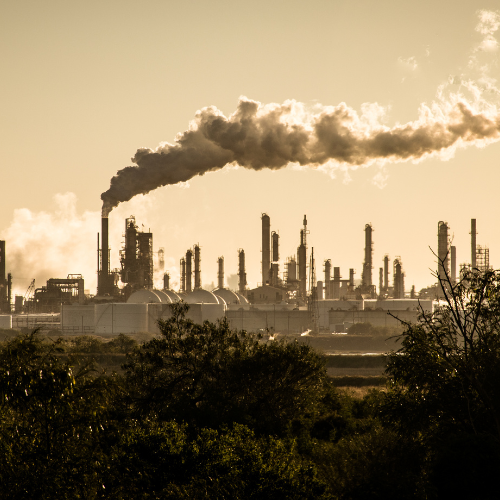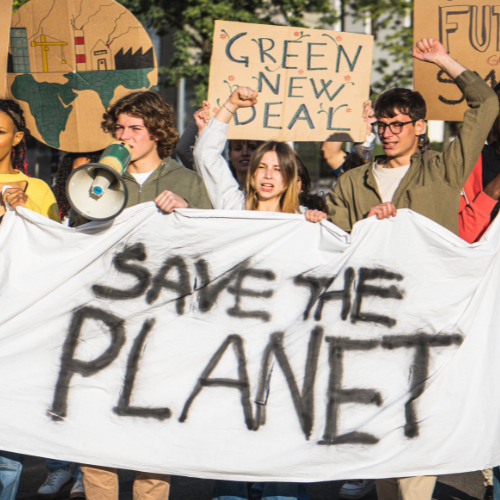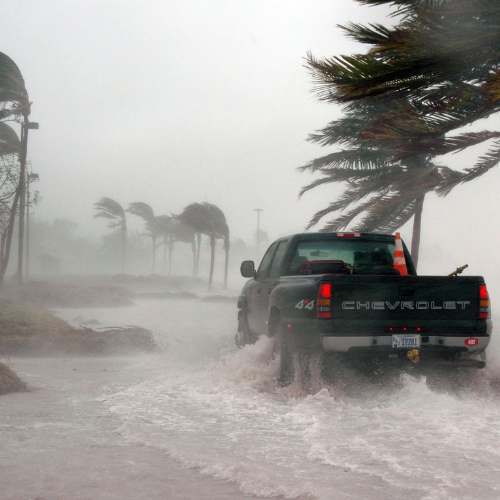Climate change is not just a theoretical concept; it is a pressing reality that affects every corner of our planet. As global temperatures rise, weather patterns shift, and ecosystems respond to the challenges posed by human activities, the urgency for understanding and addressing climate change has never been greater. In this article, we will delve into the importance of climate change, the reasons behind its urgency, the functions of the ozone layer, the impacts of greenhouse gas emissions, and the path towards sustainability through circular economy initiatives.
The Misinformation Surrounding Climate Change Initiatives.
First off, some critics argue that bankers and financial institutions exploit climate change narratives to serve their own interests, suggesting that their involvement in sustainability efforts is more about profit than genuine concern for the environment. This viewpoint posits that the focus on climate initiatives may inadvertently benefit traditional energy sectors, like coal, by fostering a narrative that distracts from the urgent need for systemic change. However, it is vital to understand that the call for sustainability and renewable energy is not about aligning with financial motives but rather addressing the critical challenges posed by climate change. The true aim of these initiatives is to safeguard our planet and ensure a livable future for generations to come, independent of any financial agenda.

The Expertise of Miners in Climate Change Discussions.
Miners are not trained climate scientists or weather experts, and their insights on climate change should be approached with caution. Their perspectives are often influenced by their business interests, which can lead to narratives that prioritize the mining industry over genuine environmental concerns. While their experiences in resource extraction are valuable in certain contexts, they may not provide the comprehensive understanding needed to address the complexities of climate change effectively. It’s essential to rely on experts in climate science to guide discussions and policies aimed at mitigating the impacts of climate change.
The Financial Landscape of Climate Change Initiatives.
The scale of financial opportunity surrounding climate change initiatives is immense, with estimates suggesting that trillions of dollars will be needed to effectively combat this existential threat. As the world grapples with the impacts of climate change, there is a growing recognition that addressing these challenges can also create significant economic opportunities. Investments in renewable energy, sustainable infrastructure, and green technologies not only contribute to environmental goals but also promise substantial financial returns.For instance, the United Nations has highlighted the need for approximately $100 billion annually to support climate action, which includes grants, loans, and private sector investments. This influx of capital can drive innovation, create jobs, and stimulate economic growth while simultaneously working towards a more sustainable future. However, the challenge remains in mobilizing these funds effectively and ensuring they are directed towards impactful solutions rather than being misallocated or lost in bureaucratic processes
Ultimately, while the urgency of climate change cannot be overstated, the financial landscape presents a dual opportunity: to mitigate environmental damage and to harness economic potential on a global scale.
Understanding Climate Change.
So Exactly What is Climate Change?
Climate change refers to significant and lasting changes in the Earth’s climate, particularly in temperature and weather patterns, over extended periods. While climate change can occur naturally, the current trend is largely driven by human activities, particularly the burning of fossil fuels, deforestation, and industrial processes, which increase greenhouse gas concentrations in the atmosphere.
The Role of the Ozone Layer.(35k Up In The Air) A.K.A Ozone Layer.
The ozone layer is a region of the Earth’s stratosphere that contains a high concentration of ozone (O₃) molecules. This layer plays a crucial role in protecting life on Earth by absorbing the majority of the sun’s harmful ultraviolet (UV) radiation. Without the ozone layer, life as we know it would be severely compromised, leading to increased rates of skin cancer, cataracts, and other health issues, as well as detrimental effects on ecosystems.
Greenhouse Gas Emissions and Pollution.
Greenhouse gases (GHGs), such as carbon dioxide (CO₂), methane (CH₄), and nitrous oxide (N₂O), trap heat in the atmosphere and are the primary contributors to global warming. Human activities, especially the combustion of fossil fuels for energy, transportation, and industry, have dramatically increased the concentrations of these gases. Additionally, other pollutants, including particulate matter, sulfur dioxide (SO₂), and nitrogen oxides (NOx), contribute to air quality deterioration and have adverse effects on human health and the environment.
Reasons Behind Climate Change.
- Fossil Fuel Dependency: The global economy heavily relies on fossil fuels for energy, resulting in high CO₂ emissions.
- Deforestation: Cutting down forests reduces the planet’s capacity to absorb CO₂, worsening climate change.
- Industrialization: Industrial processes release significant amounts of greenhouse gases and other pollutants.
- Agricultural Practices: Farming practices, particularly livestock production, contribute to methane emissions.
- Waste Management: Landfills produce methane as organic waste decomposes anaerobically.
- Consumer Behavior: Overconsumption and waste generation lead to increased carbon footprints.

The Urgency of Addressing Climate Change.
The consequences of inaction are dire. Here are ten disadvantages of continuing down the path of environmental destruction:
- Rising Sea Levels: Increased melting of polar ice caps threatens coastal cities and habitats.
- Extreme Weather Events: More frequent and severe hurricanes, droughts, and floods disrupt lives and economies.
- Biodiversity Loss: Ecosystems become unstable, leading to species extinction and reduced biodiversity.
- Health Risks: Increased air pollution contributes to respiratory diseases and other health issues.
- Food Security: Climate change impacts agriculture, threatening food supply and prices.
- Water Scarcity: Changes in precipitation patterns lead to water shortages in many regions.
- Economic Costs: The financial burden of climate-related disasters can cripple economies.
- Social Inequality: Vulnerable populations are disproportionately affected, exacerbating social inequities.
- Displacement: Climate refugees may increase as people are forced to leave their homes due to environmental changes.
- Intergenerational Impact: Future generations will inherit a more damaged planet, limiting their quality of life.
Advantages of Climate Change Initiatives.
Transitioning to a sustainable future through climate change initiatives offers numerous benefits:
- Economic Resilience: Investing in renewable energy creates jobs and reduces dependence on fossil fuels.
- Improved Public Health: Cleaner air and water lead to better health outcomes for populations.
- Biodiversity Protection: Sustainable practices help preserve ecosystems and wildlife.
- Energy Independence: Reducing fossil fuel consumption enhances national security.
- Innovation and Technology: Climate initiatives drive technological advancements and sustainable solutions.
- Social Equity: Addressing climate change can promote equitable access to resources and opportunities.
- Community Engagement: Climate initiatives foster community involvement and awareness.
- Global Cooperation: Tackling climate change encourages international collaboration and peace.
- Resilient Infrastructure: Investing in sustainable infrastructure improves resilience to climate impacts.
- Long term Sustainability: A circular economy model promotes resource efficiency and waste reduction.
The Circular Economy Transition.
A circular economy is an economic model aimed at minimizing waste and making the most of resources. It contrasts with the traditional linear economy, where products are made, used, and disposed of. Transitioning to a circular economy can significantly mitigate climate change impacts by promoting recycling, reusing, and reducing consumption.
Ten Year Goals for Progress.
By setting ambitious but achievable ten year goals, governments and organizations can begin to see meaningful progress environmentally and economically. Examples may include:
- Achieving Net Zero Emissions: Striving for net zero emissions by 2030 through renewable energy adoption.
- Increasing Recyclable Materials: Ensuring that 70% of materials used in manufacturing are recyclable within ten years.
- Restoring Natural Habitats: Committing to restoring 1 million hectares of degraded ecosystems.
- Sustainable Agriculture Practices: Implementing sustainable practices on 50% of agricultural land by 2030.
- Carbon Capture Technology: Investing in carbon capture and storage technologies to reduce emissions from industrial processes.
- Public Transportation Investment: Expanding public transportation systems to reduce reliance on personal vehicles.
- Climate Education Programs: Establishing educational programs on climate change for schools and communities.
- Green Infrastructure Development: Increasing green spaces and urban forests in cities to improve air quality and biodiversity.
- Energy Efficiency Standards: Enforcing stricter energy efficiency standards for buildings and appliances.
- Global Partnerships: Developing international agreements to share technology and resources for climate solutions.

Global Weather Change Statistics.
Statistics indicate that climate change is affecting global weather patterns. According to the Intergovernmental Panel on Climate Change (IPCC):
- Average global temperatures have risen by approximately 1.2 degrees Celsius since the late 19th century.
- Extreme weather events have increased in frequency and intensity, with recent years experiencing record breaking hurricanes, heatwaves, and wildfires.
- The past decade was the warmest on record, with 2016 and 2020 tying for the hottest years globally.
Case Studies of Climate Change Impact.
- The Netherlands: Known for its proactive approach to climate resilience, the Netherlands has invested heavily in flood defenses, including dikes and barriers, to combat rising sea levels. The country has also embraced sustainable agriculture and renewable energy sources, aiming to reduce emissions by 49% by 2030.
- Israel: Israel has taken significant strides in water conservation and renewable energy. The country has implemented advanced irrigation techniques and invested in solar energy, aiming to produce 30% of its electricity from renewable sources by 2030. This approach has made Israel a leader in climate innovation.
Government Policies and the Sustainable Development Goals. (SDGs)
Governments play a crucial role in addressing climate change through the integration of environmental and social considerations into economic policies. To align economic policies with sustainable development goals, governments must focus on:
- Environmental Stewardship: Prioritizing the protection of natural resources and ecosystems in economic planning.
- Social Equity: Ensuring that vulnerable populations are included in policy discussions and benefit from sustainable initiatives.
- Sustainable Infrastructure: Investing in infrastructure that supports renewable energy, efficient transportation, and waste reduction.
- Public Engagement: Involving citizens in climate action plans and encouraging community led initiatives.
- International Cooperation: Collaborating with other nations to share resources, technology, and best practices for combating climate change.
Conclusion.
Climate change is an imminent threat that demands immediate action. By understanding its importance, the role of the ozone layer, and the impact of greenhouse gas emissions, we can work towards a sustainable future. Embracing circular economy initiatives and setting clear ten year goals will not only benefit the environment but also foster economic growth and social equity. It is imperative that governments focus on integrating sustainable development goals into their economic policies and prioritize climate initiatives to safeguard our planet for future generations. The time to act is now. Our planet’s future depends on it.
Questions and Answers:
1. What are the primary causes of climate change?The primary causes of climate change include greenhouse gas emissions from fossil fuel combustion, deforestation, industrial processes, and agricultural practices.
2. How does climate change impact weather patterns?Climate change leads to more extreme weather events, including increased frequency and intensity of hurricanes, droughts, and heatwaves.
3. What is a circular economy?A circular economy is an economic model focused on minimizing waste and maximizing resource efficiency through recycling, reusing, and reducing consumption.
4. How can individuals contribute to climate change initiatives?Individuals can contribute by reducing their carbon footprint, supporting sustainable products, advocating for policy changes, and participating in community efforts.
5. Why is it important for governments to integrate environmental considerations into economic policies?Integrating environmental considerations into economic policies ensures that sustainable practices are prioritized, leading to long term benefits for both the economy and the environment.